Sustainable Living & Sustainable Lifestyle
Find out which countries rank highest in terms of going green.
Find out which countries rank highest in terms of going green.
The Environmental Performance Index (EPI) ranks 163 countries on a national and governmental scale, focusing on environmental public health and ecosystem vitality. There are 25 total performance indicators that are used in judging the final results, such as climate change factors and environmental burden of disease, some with greater weight than others. By using this system, a comparison is drawn across the 163 countries to identify how they rank against one another in their efforts to go green. Here we will review the top 11 greenest countries in the world, can you guess where your country rates?
The scoring is based on a scale of 0-100; as a side note, there were only 4 countries with an 85 or higher. The greenest countries in the world are shown in descending order starting at the 11th until we finally reach the #1 greenest country in the world.
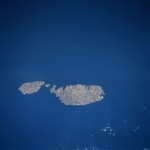 Malta gained independence from the United Kingdom in 1964 and since the 1980’s has become a transshipment point. It is located in the Mediterranean and has rainy winters and hot dry summers. The country has very limited freshwater resources and has grown increasingly reliant on desalination plants to generate freshwater for consumption. The country can only produce about 20% of its food needs and relies heavily on foreign trade to supplement the remaining 80%. Malta scored 100% on its efforts to support clean water availability to the population and another 100% on its efforts to conserve the forests.
Malta gained independence from the United Kingdom in 1964 and since the 1980’s has become a transshipment point. It is located in the Mediterranean and has rainy winters and hot dry summers. The country has very limited freshwater resources and has grown increasingly reliant on desalination plants to generate freshwater for consumption. The country can only produce about 20% of its food needs and relies heavily on foreign trade to supplement the remaining 80%. Malta scored 100% on its efforts to support clean water availability to the population and another 100% on its efforts to conserve the forests.
 Colombia emerged after the collapse of Gran Colombia in 1830 and has since been dealing with a 40 year conflict between government forces and anti-government insurgents. Often in world news for the violent drug trade which is booming, neighboring countries worry that the violence will spill across their borders. Located in Northern South America they border the Caribbean Sea and Pacific Ocean meaning their climate is quite tropical. Currently their environmental hurdles include deforestation, urban air pollution along with soil and water contamination from heavy pesticides. Colombia is also an oil producing country, the third largest supplier to the United States based on 2011 statistics.
Colombia emerged after the collapse of Gran Colombia in 1830 and has since been dealing with a 40 year conflict between government forces and anti-government insurgents. Often in world news for the violent drug trade which is booming, neighboring countries worry that the violence will spill across their borders. Located in Northern South America they border the Caribbean Sea and Pacific Ocean meaning their climate is quite tropical. Currently their environmental hurdles include deforestation, urban air pollution along with soil and water contamination from heavy pesticides. Colombia is also an oil producing country, the third largest supplier to the United States based on 2011 statistics.
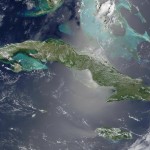 Cuba was discovered by the European’s in 1492 when Christopher Columbus landed on the island nation. Subsequently there were several centuries where Cuba was developed as a Spanish colony which also led to the decline of the native Amerindian population. U.S. intervention in 1898 helped Cuba overthrow Spanish rule and in 1902 Cuba gained independence from the U.S. through the Treaty of Paris. Cuba is a Caribbean island just 150km from the state of Florida with a tropical climate. Cuba receives high marks with 100% index in forestry conservation and 91% index for air pollution.
Cuba was discovered by the European’s in 1492 when Christopher Columbus landed on the island nation. Subsequently there were several centuries where Cuba was developed as a Spanish colony which also led to the decline of the native Amerindian population. U.S. intervention in 1898 helped Cuba overthrow Spanish rule and in 1902 Cuba gained independence from the U.S. through the Treaty of Paris. Cuba is a Caribbean island just 150km from the state of Florida with a tropical climate. Cuba receives high marks with 100% index in forestry conservation and 91% index for air pollution.
 Austria nearly tied with Cuba but marginally scored higher pushing it to 8th place. Austria was once the center of the Austro-Hungarian Empire, the country has been reduced to a very small republic after being defeated by Germany in World War II, and then obtained independence in 1955. Austria entered the EU in 1999 as a prosperous and democratic country. Austria is located in central Europe with a temperate climate meaning cold winters and moderate summers. Similar to many EU nations it does have its share of air pollution from carbon emissions and power plants though they are making strides on improving. Austria has a well developed economy with a high standard of living focusing on the service, industrial and agricultural sectors. The country scored 100% for water quality and sanitation as well as forestry preservation.
Austria nearly tied with Cuba but marginally scored higher pushing it to 8th place. Austria was once the center of the Austro-Hungarian Empire, the country has been reduced to a very small republic after being defeated by Germany in World War II, and then obtained independence in 1955. Austria entered the EU in 1999 as a prosperous and democratic country. Austria is located in central Europe with a temperate climate meaning cold winters and moderate summers. Similar to many EU nations it does have its share of air pollution from carbon emissions and power plants though they are making strides on improving. Austria has a well developed economy with a high standard of living focusing on the service, industrial and agricultural sectors. The country scored 100% for water quality and sanitation as well as forestry preservation.
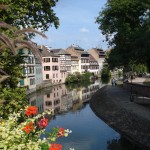 France is one of the most modern countries in the world and is a key leader in Europe. Guadeloupe, Mayotte, French Guiana, Martinique and Reunion are French regions and are actually part of France proper. Metropolitan France is located in Western Europe and usually experiences cool winters and warm summers. France is working towards improving some forest damage from acid rain and as with many modern countries struggles with urban air pollution. France is the most visited country in the world, hosting nearly 75 million tourists each year which is a significant driver of the economy. France scored high on environmental health which covered for a poor showing in the category of air pollution and the effects it had on the ecosystem.
France is one of the most modern countries in the world and is a key leader in Europe. Guadeloupe, Mayotte, French Guiana, Martinique and Reunion are French regions and are actually part of France proper. Metropolitan France is located in Western Europe and usually experiences cool winters and warm summers. France is working towards improving some forest damage from acid rain and as with many modern countries struggles with urban air pollution. France is the most visited country in the world, hosting nearly 75 million tourists each year which is a significant driver of the economy. France scored high on environmental health which covered for a poor showing in the category of air pollution and the effects it had on the ecosystem.
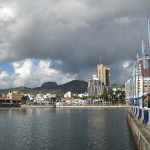 The county of Mauritius was known to Malay and Arab sailors as early as the 10th century though was explored by the Portuguese in the 16th century and settled by the Dutch. It has been controlled by both France and England and gained independence in 1968. The island country boasts one of Africa’s largest per capita incomes stemming from foreign investment, textiles and agriculture. The island nation is located east of Madagascar in the Indian Ocean with a tropical climate of warm, dry winters and hot, humid summers. It performed well with water sanitation and quality as well as agricultural practices. Like many modern countries its average was dragged down due to urban air pollution.
The county of Mauritius was known to Malay and Arab sailors as early as the 10th century though was explored by the Portuguese in the 16th century and settled by the Dutch. It has been controlled by both France and England and gained independence in 1968. The island country boasts one of Africa’s largest per capita incomes stemming from foreign investment, textiles and agriculture. The island nation is located east of Madagascar in the Indian Ocean with a tropical climate of warm, dry winters and hot, humid summers. It performed well with water sanitation and quality as well as agricultural practices. Like many modern countries its average was dragged down due to urban air pollution.
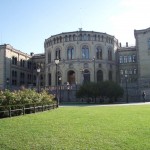 Norway boasted two centuries of Viking raids into Europe which calmed as the country adopted Christianity. The scenery and landscape found in Norway is stunning, mentioned by many publications as a top tourist destination. The climate is temperate across the coast though the interior of the country is cold and often wet with precipitation. Norway is rich with natural resources such as oil, fisheries, minerals and hydropower. The country is the second largest gas exporter and 9th in terms of oil exports. Norway struggles with acid rain which affects forests and pollutes lakes, impacting the fisheries. It also has urban air pollution from vehicle emissions. It has high marks within the environmental health category and could have scored much higher if the country worked to protect its biodiversity.
Norway boasted two centuries of Viking raids into Europe which calmed as the country adopted Christianity. The scenery and landscape found in Norway is stunning, mentioned by many publications as a top tourist destination. The climate is temperate across the coast though the interior of the country is cold and often wet with precipitation. Norway is rich with natural resources such as oil, fisheries, minerals and hydropower. The country is the second largest gas exporter and 9th in terms of oil exports. Norway struggles with acid rain which affects forests and pollutes lakes, impacting the fisheries. It also has urban air pollution from vehicle emissions. It has high marks within the environmental health category and could have scored much higher if the country worked to protect its biodiversity.
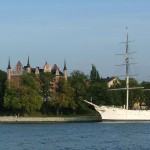 Sweden is neighbors with the 5th ranked Norway; it was a formidable military power during the 17th century though has not participated in a war for nearly two centuries. Sweden joined the EU in 1995 though decided to reject the Euro in a 2003 referendum. Sweden is in Northern Europe and shares a border with the Baltic Sea. It has a subarctic northern climate though temperate in the south. Sharing similar issues with Norway, it has acid rain which pollutes the seas and freshwater. Sweden’s economy focuses heavily on foreign trade, exporting iron ore, hydropower and timber along with banking industries. They received high marks across many of the 25 categories though had trouble with air pollution and sustainable fisheries.
Sweden is neighbors with the 5th ranked Norway; it was a formidable military power during the 17th century though has not participated in a war for nearly two centuries. Sweden joined the EU in 1995 though decided to reject the Euro in a 2003 referendum. Sweden is in Northern Europe and shares a border with the Baltic Sea. It has a subarctic northern climate though temperate in the south. Sharing similar issues with Norway, it has acid rain which pollutes the seas and freshwater. Sweden’s economy focuses heavily on foreign trade, exporting iron ore, hydropower and timber along with banking industries. They received high marks across many of the 25 categories though had trouble with air pollution and sustainable fisheries.
Ranked 3rd: Costa Rica with an EPI score of 86.4
 Costa Rica once was a Spanish colony though declared independence in 1821 and became a sovereign democratic nation in 1838. Land ownership is very high and the economy is expanding due to a booming technology and tourism sector. Bordering both the Caribbean Sea and Pacific Ocean, the country is known for its pristine beaches and tropical/subtropical climate. The country could lose its spot if the deforestation issues are not resolved as well as water sanitation and pollution. It received its lowest mark in air pollution though scored very well in many other categories.
Costa Rica once was a Spanish colony though declared independence in 1821 and became a sovereign democratic nation in 1838. Land ownership is very high and the economy is expanding due to a booming technology and tourism sector. Bordering both the Caribbean Sea and Pacific Ocean, the country is known for its pristine beaches and tropical/subtropical climate. The country could lose its spot if the deforestation issues are not resolved as well as water sanitation and pollution. It received its lowest mark in air pollution though scored very well in many other categories.
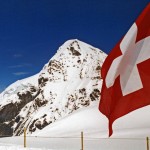 Switzerland has a long standing tradition of neutrality which has been honored by other European countries, even through both world wars; impressive considering it borders France and Germany. The climate can vary due to the mountainous region which it is famous for. Switzerland has a prosperous economy with a well developed service sector led by banking industries. It also specializes in high technology and knowledge based production. It is obvious that with Switzerland being in second place it scored high marks in many categories though had a very poor showing in terms of air pollution due to vehicle emissions and open air burning. Its forestry and biodiversity stood out with 100% ratings for both categories.
Switzerland has a long standing tradition of neutrality which has been honored by other European countries, even through both world wars; impressive considering it borders France and Germany. The climate can vary due to the mountainous region which it is famous for. Switzerland has a prosperous economy with a well developed service sector led by banking industries. It also specializes in high technology and knowledge based production. It is obvious that with Switzerland being in second place it scored high marks in many categories though had a very poor showing in terms of air pollution due to vehicle emissions and open air burning. Its forestry and biodiversity stood out with 100% ratings for both categories.
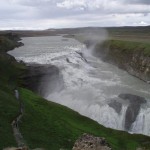 Top honors go to Iceland which is the greenest country in the world, only 6.5 points away from a perfect score. Iceland was settled by Norwegian and Celtic immigrants in the 9th and 10th centuries. The country has been independent for over 300 years and boasts the world’s oldest functioning legislative assembly which was established in 930. Iceland receives top marks in other rankings as well such as literacy, longevity and social cohesion all first rate by world standards. Iceland is an island country in the Northern Atlantic Ocean, northwest of England. The name can fool you since the climate consists of mild, windy winters and cool summers. The major environmental concerns are water pollution from fertilizer runoff and inadequate wastewater management.
Top honors go to Iceland which is the greenest country in the world, only 6.5 points away from a perfect score. Iceland was settled by Norwegian and Celtic immigrants in the 9th and 10th centuries. The country has been independent for over 300 years and boasts the world’s oldest functioning legislative assembly which was established in 930. Iceland receives top marks in other rankings as well such as literacy, longevity and social cohesion all first rate by world standards. Iceland is an island country in the Northern Atlantic Ocean, northwest of England. The name can fool you since the climate consists of mild, windy winters and cool summers. The major environmental concerns are water pollution from fertilizer runoff and inadequate wastewater management.
If you didn’t find your country on this list, don’t worry you can look here for the complete list. Many of our readers are from the United States and Canada so we won’t leave you hanging. The U.S. ranked 61st with a score of 63.5% and Canada ranked 46th with a score of 66.4, showing there is a lot of work to be done in North America.